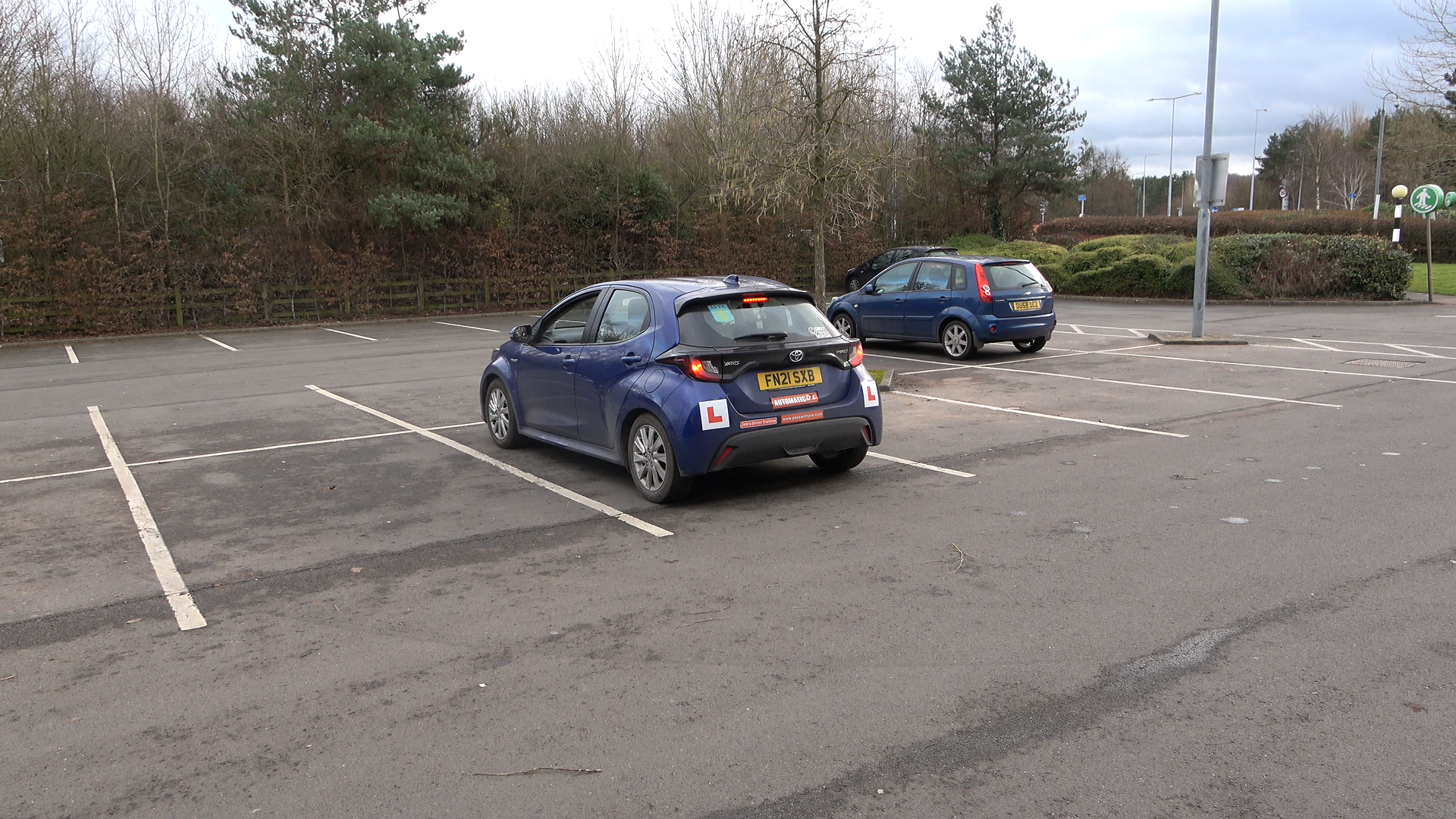If you have an opportunity of parking to either the left or the right, turning right into a bay can be slightly easier due to clearer observation of the bay lines as you begin to enter the bay.
Further, turning right into a bay does not involve moving onto the opposite side of the road (against the flow of traffic) as it does with turning left into a bay.
Forward park into a bay – turning to the left
As with turning right into a bay, you’ll need to maximise the turning angle of your car. To do this, move over to the opposite side of the road before turning. Before doing so, check your interior and right mirror and the right blind spot.
Now check your interior and left mirror and signal to the left.
You will now reach your reference point and point of turn. As with turning right into a bay, stopping the car at this point slows down the manoeuvre allowing for better observation. Being on the opposite side of the road is hazardous, so before making the turn, check the interior and left mirror, followed by the left blind spot. If all is clear, slowly move off and immediately and quickly steer full left lock.
Enter the bay and wait for the end of the bay line / kerb to fall just under your door mirror as a reference point on where to stop.













